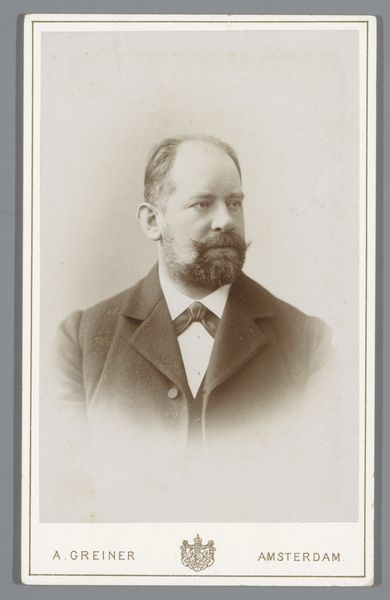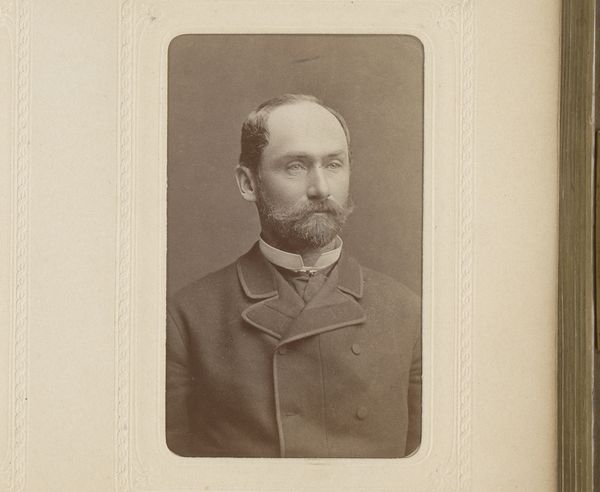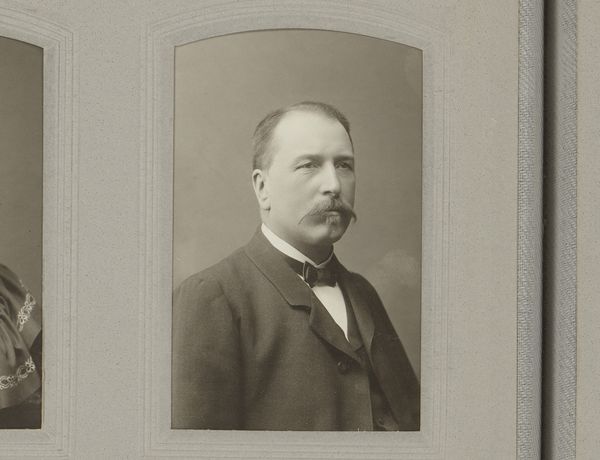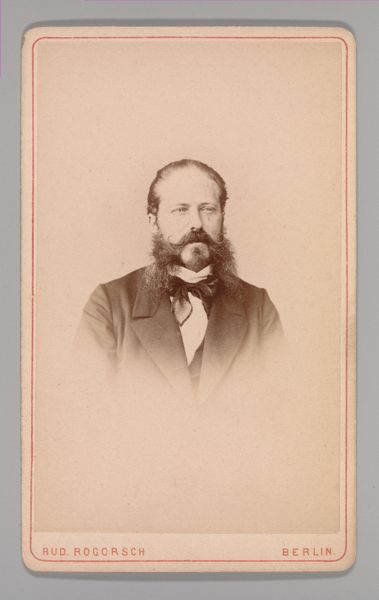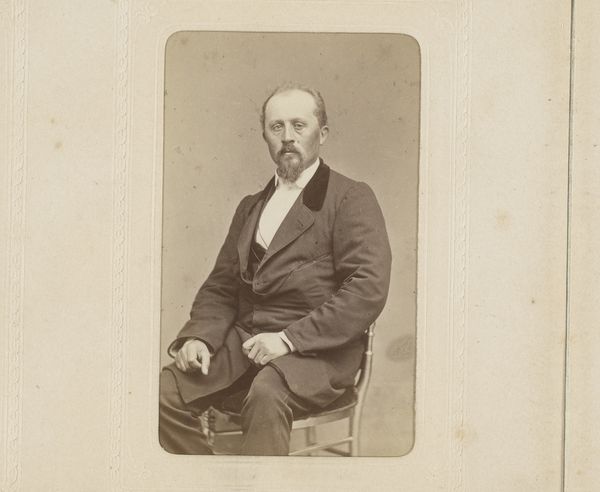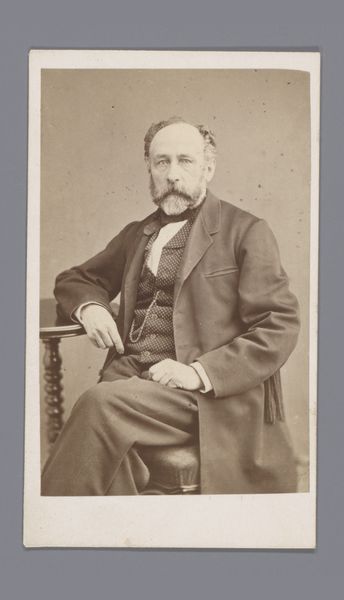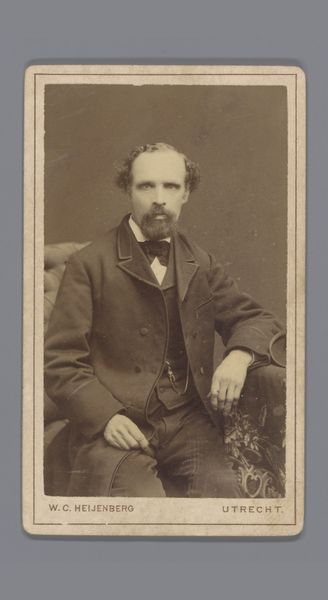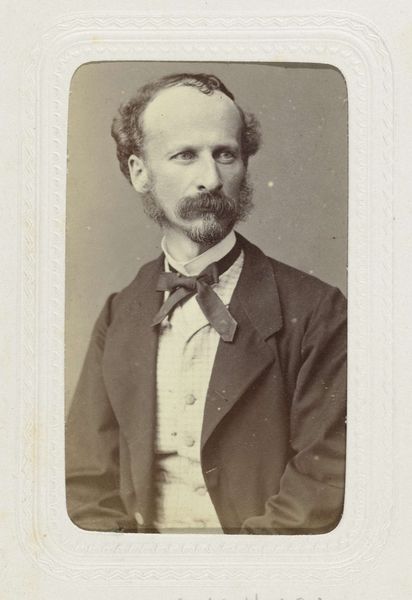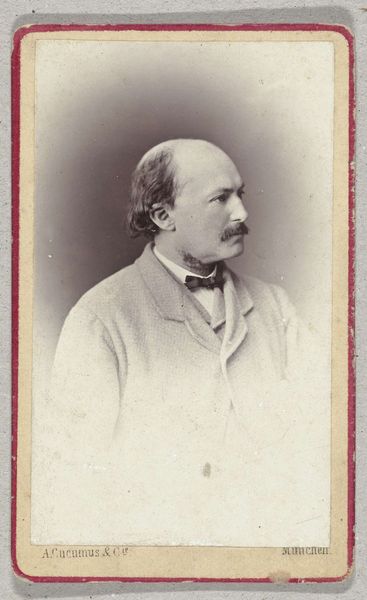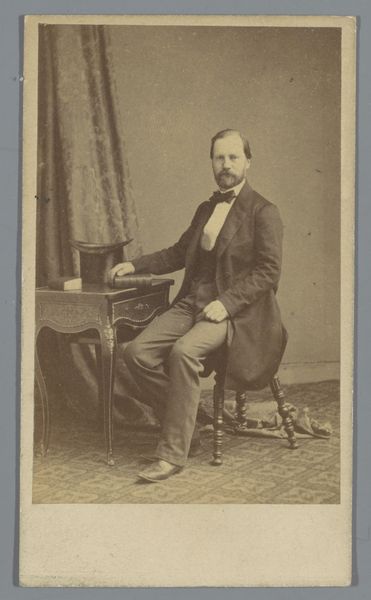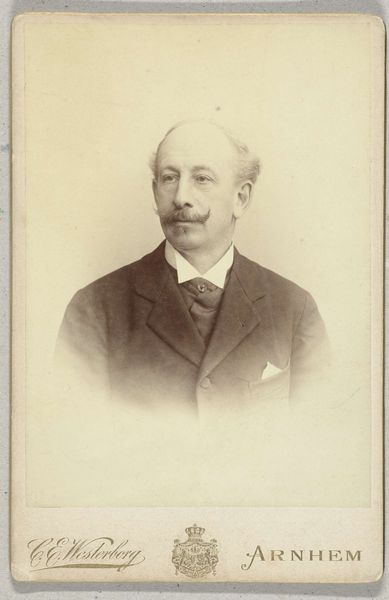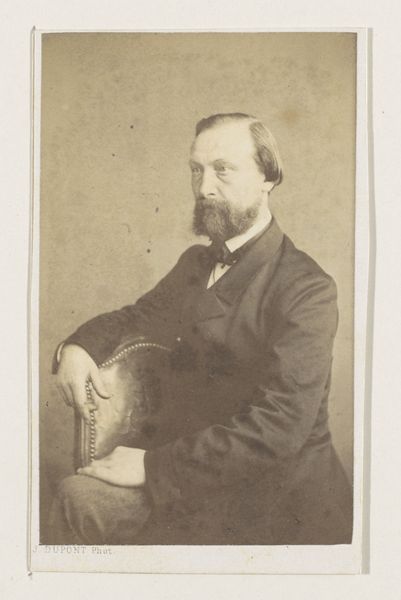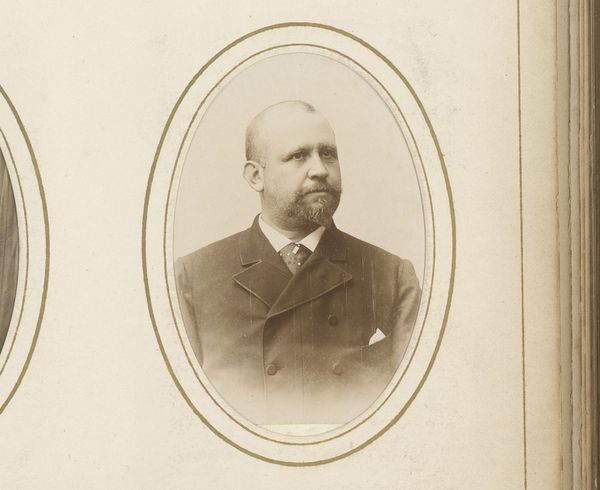
Portret van Louis Philippe Albert d'Orléans, Comte de Paris before 1894
0:00
0:00
daguerreotype, photography
#
portrait
#
portrait
#
daguerreotype
#
charcoal drawing
#
photography
#
realism
Dimensions: height 122 mm, width 88 mm
Copyright: Rijks Museum: Open Domain
Curator: Here we have Isidore Alphonse Chalot's portrait of Louis Philippe Albert d'Orléans, Comte de Paris, rendered sometime before 1894. The medium appears to be a daguerreotype, although there are elements reminiscent of a charcoal drawing. What strikes you about it initially? Editor: The sepia tones give it an undeniably melancholic air, almost as if time itself is a tangible material. The texture is incredible – look at the way the light catches the Comte's beard! It feels intensely intimate despite the formality. Curator: Well, daguerreotypes as an early photographic process are quite direct, involving a polished silver-plated copper sheet treated with chemicals and exposed to light in a camera. So, you're seeing light recorded on metal, essentially. Its reproduction democratized portraiture but also influenced ideas about realism in art, and social access to image production. Editor: That explains the astonishing detail. Knowing it's light etched onto metal changes my perception of its permanence. The subject feels so… present. Did people alter their behaviors knowing the photograph process took time? Curator: Exactly. The exposure times for daguerreotypes were considerably long, often requiring subjects to remain still for minutes. It wasn’t uncommon for sitters to use head braces during the sitting! Think about the sitter-artist power dynamics in portrait paintings and how it is shifted here through technology and industrializing material production. Editor: Almost like performance art, where simply *being* becomes the artwork itself! This interplay between historical moment, technological advance, and raw, human subject… it stirs up all sorts of intriguing considerations. Is the goal representing an important political figure or something else? Curator: While commissioned, portraits such as these served as instruments of political self-fashioning within the dwindling French aristocracy in that period of shifting class and monarchical power. These photographic methods offered new avenues for disseminating carefully constructed likeness. Editor: So, Chalot and the Comte de Paris consciously created an image that projects specific virtues, class consciousness and even maybe dynastic aspirations into the future. What would people at that time feel holding such an image? Curator: It gave families tangible ways to keep their social positions circulating. Even for someone with more restricted capital or resources. The daguerreotype became a significant material object shaping new economies. Editor: Material things shaping social connections...it resonates today as strongly as ever. Thanks for opening my eyes to how profoundly an image produced with some silver and light and then can ripple through social and political space. Curator: And thanks to you for those deeply relevant connections to the present moment. These artifacts, despite their historical contexts, invite such reflections!
Comments
No comments
Be the first to comment and join the conversation on the ultimate creative platform.
